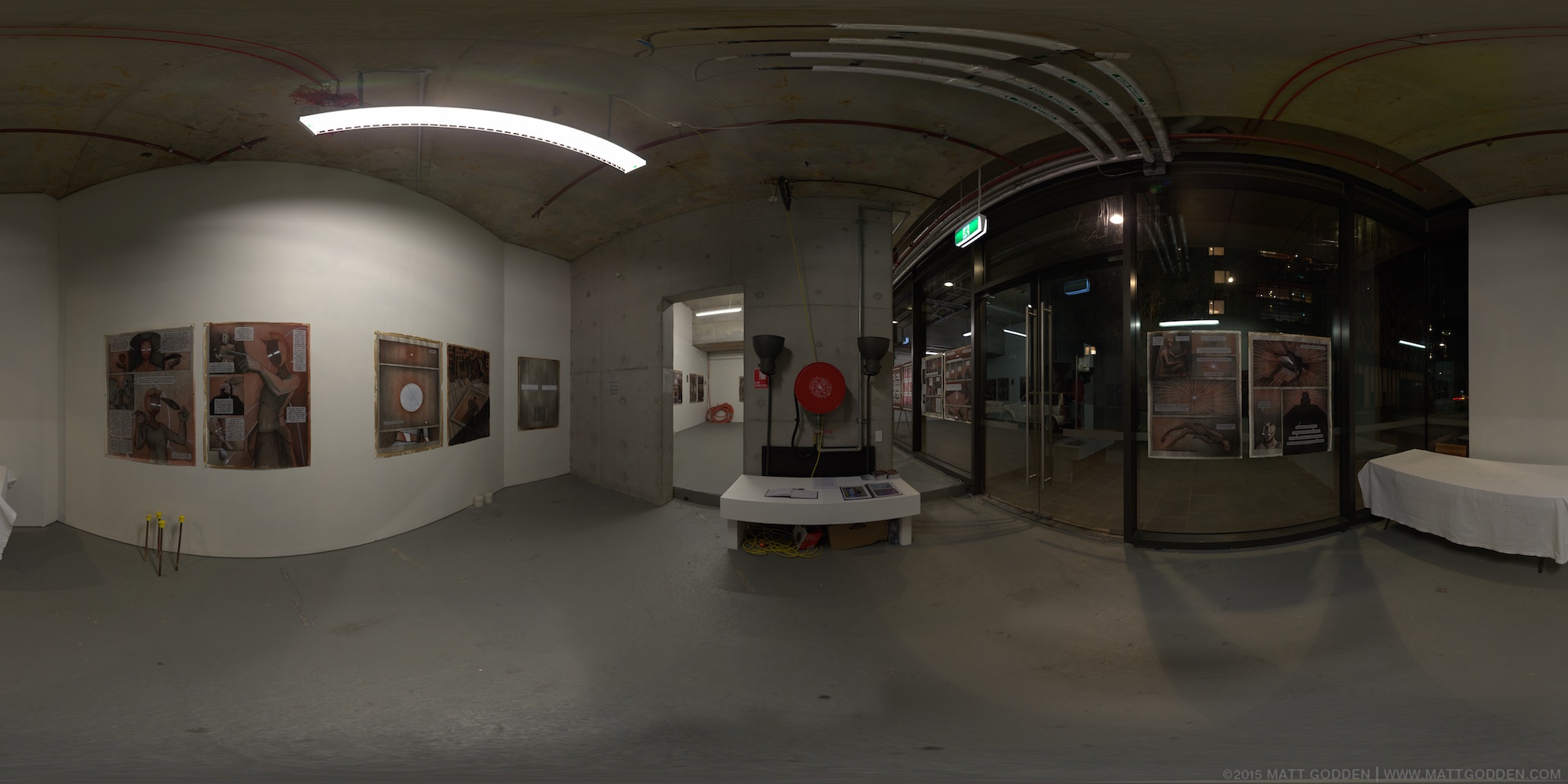Size: 60x91cm (70×101 with matte)
Print Sales: Golgotha Graphics

human : artist
Following is an art history essay from my second year core Modernism course. It seemed to do reasonably well in marking, so I figured I may as well publish it. The length restriction was 1200 words, and so as the marker rightly suggested, it can become a little point-like (what happens when you’re editing down).
Question: To what extent is modernism a response to the Industrial Revolution? Did it replace the classical style of pre-industrial Europe? In your answer you may refer to a range of practices, including architecture, ceramics and photography.
Modernism is a tacit realisation that the overwhelming direction of the arts since the beginning of the Renaissance had run its course. Sculptors had made stone look as much like flesh as possible. Painters had made the flat surface of the picture plane as convincingly deep as the horizon, and builders had replicated the Greek temple and Roman arch for everything upto the metaphorical garden shed. The time of illusion through technical dominance of materials was drawing to a close (along with that of the craftsman who wielded that dominance), and a new era of honesty and sincerity to materials and function was dawning. Modernism therefore, is both a response to and enabled by, the industrial revolution.
Cages is an experimental film photography series, done as an exploration of the confinement caused by illness. Every window of an apartment is covered by MRI imaging, as a metaphor for one’s outlook being constantly filtered through the perspective of one’s medical condition.
Hidden in plain view in each image is a hypodermic syringe, and a vial of medication.
Dreamspace was a first year college project for my second semester photography elective. It built upon shooting and darkroom skills from first semester, combined with experiments in photogrammery.
This project forms a sequential narrative, a journey through an ambiguous horror of medicine and mortality.
Repetition features heavily, elements are reused from image to image, and are massed in individual images. Most of the objects are in some way connected to repetition, each one of them a measure of time.
 Here’s one of my three teapots.
Here’s one of my three teapots.
It’s constructed as a wheel thrown bowl, that’s deformed, and has a top added, along with the fins that are moulded to fit the thumb and middle finger. The lid is a little thrown and turned bowl which could theoretically be filled with milk to warm as the tea draws. The lid stays level as you tilt the pot under it, and you pretty much have to go past vertical to get it to fall out.
If you click the image, give it a bit to load the Quicktime file. It’ll let you drag the view around once it’s loaded.